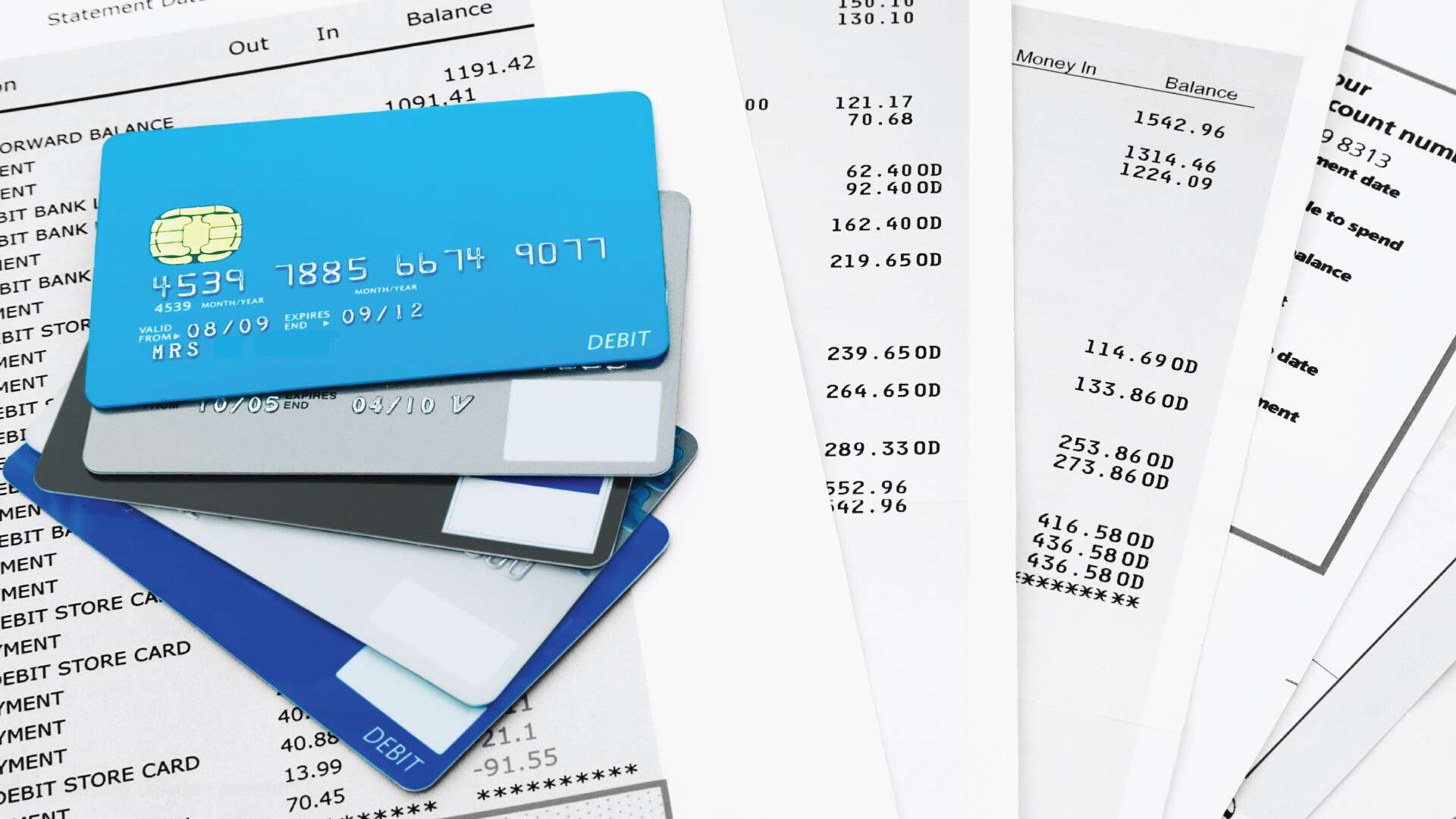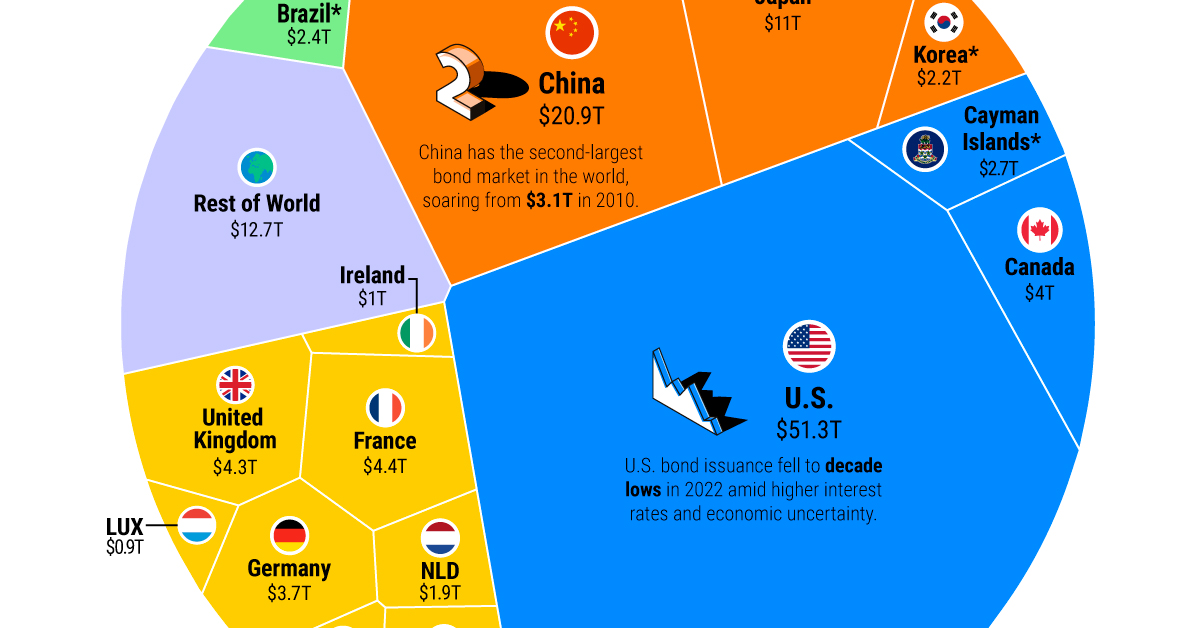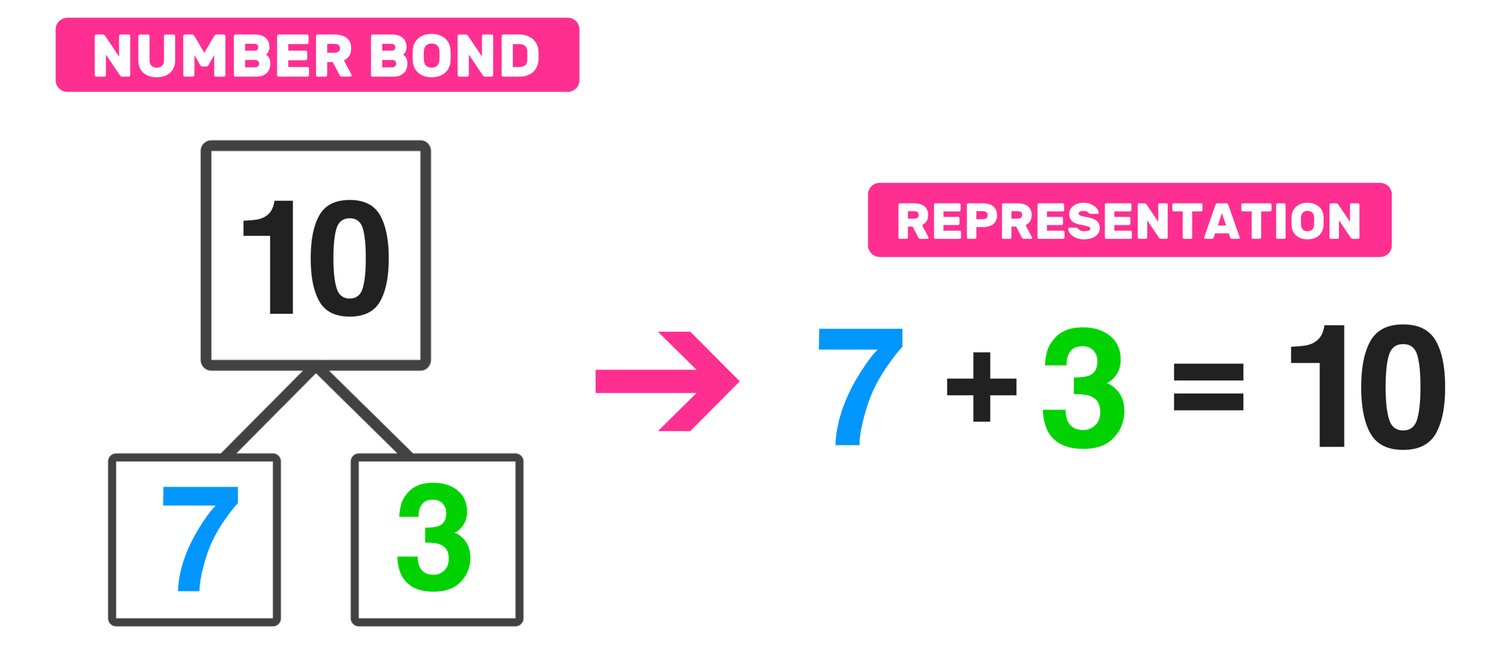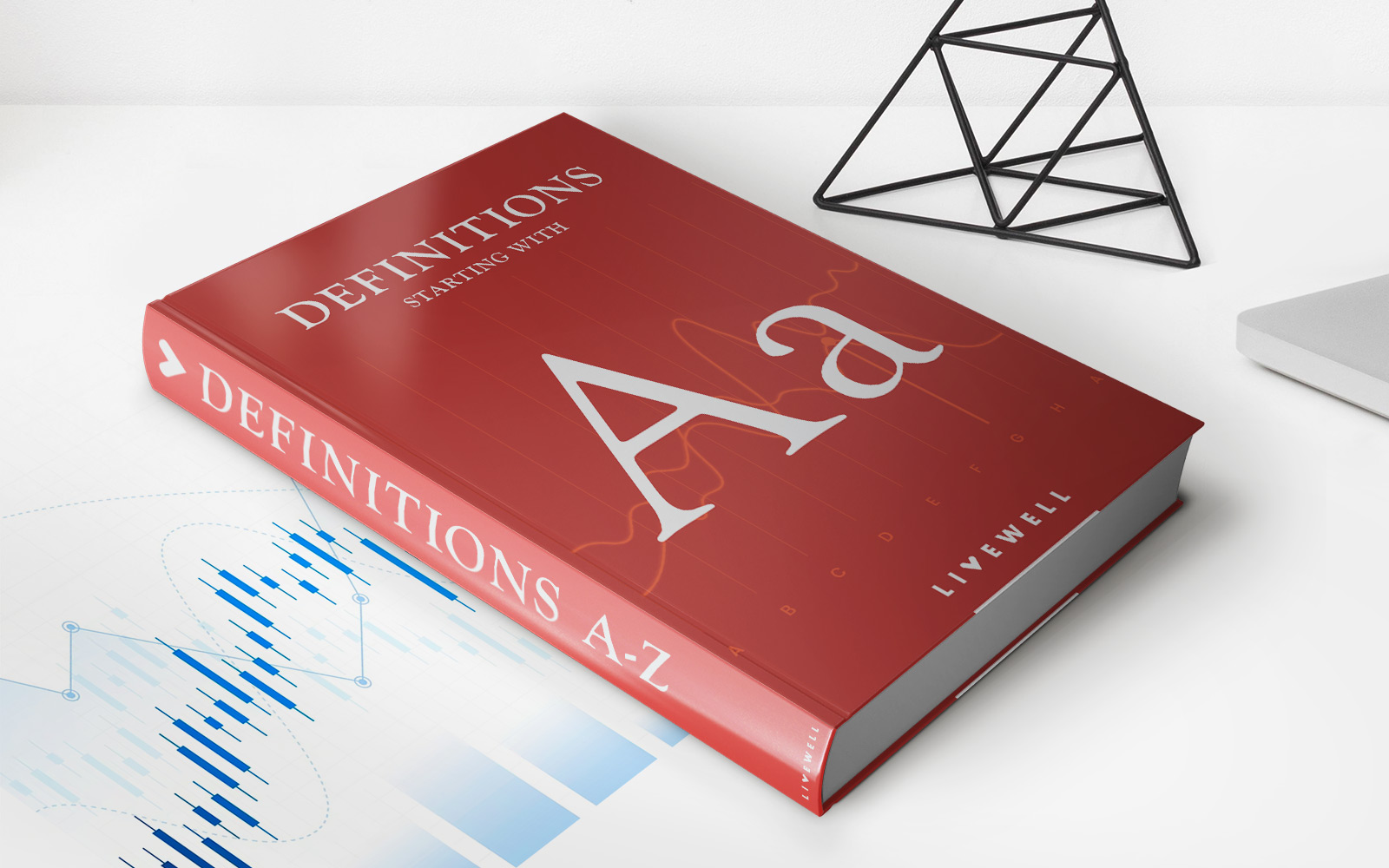

Finance
What Are Treasury Bills And Bonds
Published: October 11, 2023
Discover the world of finance through treasury bills and bonds. Learn how these investment options can help you grow your wealth and achieve your financial goals.
(Many of the links in this article redirect to a specific reviewed product. Your purchase of these products through affiliate links helps to generate commission for LiveWell, at no extra cost. Learn more)
Table of Contents
Introduction
When it comes to investing and managing one’s finances, it is crucial to have a good understanding of the different financial instruments available. Two of the most commonly discussed investment options in the world of finance are Treasury bills (T-bills) and Treasury bonds (T-bonds). These are debt securities issued by the government to raise capital to fund various projects and initiatives.
Treasury bills and Treasury bonds play a significant role in the world of finance as they offer a safe and reliable avenue for investors to park their funds. They are considered low-risk investments and are backed by the full faith and credit of the government. This makes them particularly attractive to risk-averse investors looking for stability and income generation.
In this article, we will delve into the details of Treasury bills and Treasury bonds, exploring their features, investment opportunities, and the key differences between them. By the end, you will have a solid understanding of these financial instruments, enabling you to make informed investment decisions.
Understanding Treasury Bills
Treasury bills, or T-bills, are short-term debt instruments issued by the government to finance its short-term borrowing needs. They are typically issued with maturities of 4, 13, 26, or 52 weeks, although the specific terms can vary. T-bills are considered one of the safest investments available as they are backed by the full faith and credit of the government.
Unlike traditional bonds, T-bills do not pay periodic interest. Instead, they are sold at a discount to their face value and the investor earns the difference between the discounted purchase price and the face value at maturity. This difference effectively represents the interest earned on the investment.
For example, if an investor purchases a $1,000 T-bill with a discount price of $950 and a maturity period of 13 weeks, they will receive $1,000 at the end of the 13-week term. The $50 difference between the purchase price and the face value is their return on investment.
One of the primary benefits of investing in T-bills is their high liquidity. They can be easily bought and sold in the secondary market before their maturity date. Additionally, T-bills are exempt from state and local income taxes, making them attractive to investors seeking tax advantages.
It is important to note that T-bills are typically sold through competitive or non-competitive bidding at Treasury auctions. Competitive bidders specify the discount rate, while non-competitive bidders accept the average discount rate set by the auction. The final price and yield are determined by the highest accepted bids.
T-bills offer a reliable and short-term investment option for investors looking to preserve capital and earn a modest return. They are especially popular among individuals and institutions that seek a safe haven for their funds during uncertain economic times or periods of market volatility.
Features of Treasury Bills
Treasury bills (T-bills) possess several key features that make them an attractive investment option for both individual and institutional investors. Here are some of the notable features of T-bills:
- Short-term maturity: T-bills have relatively short maturities, typically ranging from 4 to 52 weeks. This makes them ideal for investors seeking short-term investment options or those looking to park their funds temporarily.
- Low risk: T-bills are considered one of the safest investment instruments available in the market. They are backed by the full faith and credit of the government, meaning the likelihood of default is extremely low.
- Discount pricing: T-bills are sold at a discount to their face value. Investors purchase them for less than their face value and earn the difference as their return at maturity. This allows investors to enjoy a fixed return on their investment.
- Liquidity: T-bills offer high liquidity, meaning they can be easily bought and sold in the secondary market before their maturity. This makes them a flexible investment option for those who may need access to their funds quickly or wish to adjust their portfolio allocation.
- Tax advantages: T-bills are exempt from state and local income taxes, making them attractive to investors seeking to minimize their tax liabilities. However, they are still subject to federal income tax.
- Frequent issuance: The U.S. Treasury regularly auctions T-bills to meet its short-term borrowing needs. This provides investors with a consistent supply of investment opportunities, ensuring accessibility and ample investment choices.
Overall, Treasury bills combine safety, simplicity, and reliability, making them a popular choice for investors seeking a low-risk investment option with a short-term horizon. Whether you are an individual investor looking to preserve capital or an institution seeking a short-term parking place for excess funds, T-bills can serve as a valuable component of your investment strategy.
Investing in Treasury Bills
Investing in Treasury bills (T-bills) can be a straightforward process, offering individuals and institutions a safe and reliable investment option. Here are the steps to invest in T-bills:
- Open a TreasuryDirect account: To invest in T-bills directly from the U.S. Treasury, you need to open a TreasuryDirect account. This can be done online through the official TreasuryDirect website. The account allows you to purchase, hold, and manage Treasury securities, including T-bills.
- Determine the investment amount: Decide on the amount you want to invest in T-bills. Keep in mind that T-bills are typically sold in minimum denominations of $1,000.
- Decide on the maturity period: Choose the maturity period that aligns with your investment goals and timeframe. T-bills offer maturities of 4, 13, 26, or 52 weeks.
- Submit a bid: When Treasury auctions are held, you can submit a bid for T-bills. Competitive bidders specify the discount rate they are willing to accept, while non-competitive bidders accept the average discount rate set by the auction. The final price and yield are determined by the highest accepted bids.
- Wait for the auction results: After submitting your bid, you need to wait for the auction results. If your bid is successful, you will be notified, and the T-bills will be issued to your TreasuryDirect account.
- Hold or sell T-bills: Once the T-bills are in your account, you have the option to hold them until maturity or sell them in the secondary market. If you decide to sell before maturity, the price will be determined by market conditions and demand.
It is important to note that while investing in T-bills is relatively straightforward, the process may vary if you choose to invest through a broker or dealer. They can assist you with purchasing T-bills on the secondary market or through a brokerage account.
Investing in T-bills offers stability, liquidity, and a predictable return on investment. They are particularly attractive to investors who prioritize the preservation of capital and seek a low-risk investment option. By following the steps outlined above, you can easily participate in Treasury auctions and add T-bills to your investment portfolio.
Understanding Treasury Bonds
Treasury bonds, often referred to as T-bonds, are long-term debt securities issued by the government to fund its borrowing needs. Unlike Treasury bills, which have short-term maturities, T-bonds typically have maturities of 10 years or more. They are considered one of the safest forms of investment due to their backing by the full faith and credit of the government.
T-bonds pay periodic interest to investors, known as coupon payments, at a fixed rate throughout the bond’s life. The interest is paid semi-annually, providing investors with a steady income stream. At maturity, investors receive the full face value of the bond, which represents the initial investment amount.
Treasury bonds are actively traded in the secondary market, making them a liquid investment option. Their value can fluctuate based on changes in interest rates and prevailing market conditions. However, T-bonds are considered relatively stable investments, particularly for those seeking a reliable income stream and long-term capital preservation.
These bonds are available for purchase through Treasury auctions, where investors can submit competitive or non-competitive bids. Competitive bidders specify the yield they are willing to accept, while non-competitive bidders accept the average yield determined by the auction. The highest competitive bids set the yield for newly issued Treasury bonds.
One of the primary advantages of investing in T-bonds is their low risk. They are considered virtually risk-free as they are backed by the U.S. government, which has the ability to raise funds through taxation and is highly unlikely to default on its debt obligations. This makes T-bonds an attractive option for risk-averse investors looking for a stable investment avenue.
Treasury bonds are appealing to a wide range of investors, including individuals, institutional investors, and foreign governments. They provide long-term investment opportunities and offer diversification benefits to portfolios. By understanding how T-bonds function and their features, investors can make informed decisions about whether to include them in their investment strategies.
Types of Treasury Bonds
Treasury bonds, also known as T-bonds, come in different types, each with its own unique characteristics. Understanding the various types of T-bonds can help investors make informed decisions regarding their investment strategy. Here are the main types of Treasury bonds:
- Fixed-Rate Treasury Bonds: These are the most common type of Treasury bonds. They have a fixed interest rate throughout their maturity period, with interest payments made semi-annually. Investors receive their initial investment amount, known as the face value or par value, at maturity. Fixed-rate Treasury bonds are considered a safe investment option, providing predictable income and capital preservation.
- Inflation-Protected Treasury Bonds (TIPS): TIPS are designed to protect investors from the negative effects of inflation. The principal value of TIPS is adjusted based on changes in the Consumer Price Index (CPI), a measure of inflation. This ensures that the bond’s value keeps pace with inflation. TIPS also pay interest semi-annually, which is based on the adjusted principal value. TIPS provide a guaranteed real return, making them attractive to investors seeking protection against inflation.
- Floating Rate Treasury Bonds: Floating rate Treasury bonds have variable interest rates that are tied to a specific benchmark, such as the Treasury Constant Maturity Index (TCMI). The interest rate is adjusted periodically based on changes in the benchmark rate. This allows investors to benefit from rising interest rates, as the bond’s interest payments increase accordingly. Floating rate Treasury bonds provide a hedge against interest rate risk.
- Zero-Coupon Treasury Bonds: Zero-coupon Treasury bonds, also known as STRIPS (Separate Trading of Registered Interest and Principal of Securities), do not pay periodic interest like other Treasury bonds. Instead, they are sold at a discount to their face value and mature at par value. The difference between the purchase price and the face value represents the earnings on the bond. Zero-coupon Treasury bonds offer potential capital gains, as their value increases over time to reach the face value at maturity.
Each type of Treasury bond caters to different investment objectives and risk tolerances. Fixed-rate Treasury bonds provide stability and predictable income, while TIPS offer protection against inflation. Floating rate Treasury bonds provide flexibility in changing interest rate environments, and zero-coupon Treasury bonds offer a different approach to earning returns. By understanding the characteristics of each type, investors can choose the most suitable Treasury bonds to meet their investment goals.
Features of Treasury Bonds
Treasury bonds, also known as T-bonds, possess several key features that make them an attractive investment option for investors seeking stability, income, and long-term capital preservation. Here are some notable features of Treasury bonds:
- Long-term maturity: Unlike Treasury bills, which have short-term maturities, T-bonds have longer-term maturities typically ranging from 10 to 30 years. This makes them suitable for investors with a longer time horizon.
- Fixed interest payments: Treasury bonds pay regular and predictable interest payments, known as coupon payments, semi-annually. The interest rate is fixed at the time of issuance, providing investors with a steady stream of income.
- Stability and safety: T-bonds are backed by the full faith and credit of the government, making them one of the safest investment vehicles available. The U.S. government has a strong ability to repay its debt obligations, making T-bonds a low-risk investment option.
- Income generation: The fixed interest payments from T-bonds provide investors with a consistent income stream. This makes T-bonds particularly attractive to income-focused investors, such as retirees or those seeking stable cash flow.
- Liquidity: Treasury bonds are actively traded in the secondary market, providing investors with liquidity. They can be easily bought and sold before their maturity, offering flexibility to investors who may need to access their funds or adjust their investment portfolios.
- Diversification: T-bonds can serve as a valuable diversification tool within an investment portfolio. They typically exhibit lower volatility compared to other asset classes, such as stocks, providing a hedge against market fluctuations.
- Competitive yields: Treasury bonds often offer competitive yields compared to other fixed-income investments. The U.S. government’s strong credit rating and stability contribute to T-bonds’ attractiveness for investors seeking higher returns with relatively lower risks.
Treasury bonds offer a reliable and predictable investment option for investors looking to preserve capital, generate income, and diversify their portfolios. They provide a safe haven in uncertain economic times and serve as a reliable long-term investment avenue. By understanding the features of Treasury bonds, investors can make informed decisions and incorporate them into their investment strategies.
Investing in Treasury Bonds
Investing in Treasury bonds, also known as T-bonds, can be a prudent choice for investors seeking a secure and income-generating investment option. Here are the steps to consider when investing in T-bonds:
- Educate yourself: Familiarize yourself with the basics of Treasury bonds and understand their features, risks, and potential returns. This will help you make informed investment decisions.
- Choose a brokerage account: Decide whether you want to invest directly through the U.S. Treasury or use a brokerage account. Opening a brokerage account gives you access to a wide range of investment options and provides assistance from financial professionals.
- Determine your investment objective: Clarify your investment goals, such as securing a steady income stream, preserving capital, or diversifying your portfolio. This will help you determine the appropriate allocation and duration of your Treasury bond investments.
- Decide on the maturity: Treasury bonds have different maturity periods, typically ranging from 10 to 30 years. Choose a maturity that aligns with your investment objectives and time horizon.
- Consider yield: Review the yields offered by Treasury bonds to identify potential income opportunities. Pay attention to the current market rates and compare them to the yields offered by different maturities.
- Place your order: If you choose to invest directly through the U.S. Treasury, you can place your order through their online platform, TreasuryDirect. Alternatively, if you use a brokerage account, contact your broker to place your order.
- Monitor your investment: Keep an eye on your Treasury bond investment throughout its duration. Monitor interest rate movements and evaluate the need for any adjustments to your portfolio based on your changing financial circumstances or investment goals.
- Consider reinvestment: As Treasury bonds mature and provide you with the face value, consider reinvesting the proceeds into new bonds if it aligns with your investment strategy at that time.
Investing in Treasury bonds offers security, stable income, and diversification benefits. They are highly regarded for their low-risk nature and are considered a benchmark for the bond market. By understanding the investment process and carefully selecting the appropriate Treasury bonds, you can build a well-rounded investment portfolio that meets your financial goals.
Differences between Treasury Bills and Treasury Bonds
Treasury bills (T-bills) and Treasury bonds (T-bonds) are both debt securities issued by the U.S. government to finance its operations, but they differ in several key aspects. Understanding the differences between T-bills and T-bonds can help investors make informed decisions based on their investment goals and risk preferences. Here are some of the main differences:
- Maturity: T-bills have shorter-term maturities ranging from 4 to 52 weeks, while T-bonds have longer-term maturities typically ranging from 10 to 30 years. T-bills are considered short-term investments, while T-bonds are considered long-term investments.
- Interest payments: T-bills do not pay periodic interest. Instead, investors earn the difference between the discounted purchase price and the face value at maturity, which represents their return on investment. In contrast, T-bonds pay regular interest payments, known as coupon payments, typically semi-annually, providing investors with a steady income stream.
- Investment horizon: T-bills are suitable for investors with short-term investment horizons or those looking for a temporary place to park their funds. On the other hand, T-bonds are more appropriate for investors with long-term investment objectives, such as retirement planning or capital preservation over an extended period.
- Risk profile: Both T-bills and T-bonds are considered low-risk investments due to the backing of the U.S. government. However, T-bills carry slightly lower risk compared to T-bonds due to their shorter maturities and absence of interest rate risk. T-bonds, being longer-term investments, are more susceptible to interest rate fluctuations that can impact their market value.
- Return on investment: T-bills offer a relatively lower return compared to T-bonds due to their shorter maturities and lack of periodic interest payments. T-bonds, with their longer maturities and regular interest payments, provide investors with a higher overall return over the bond’s life.
- Liquidity: Both T-bills and T-bonds are actively traded in the secondary market, offering liquidity to investors. However, T-bills tend to have higher liquidity as they have shorter maturities and are frequently issued. This makes T-bills easier to buy or sell before their maturity date compared to T-bonds.
- Diversification: Both T-bills and T-bonds can be used to diversify an investment portfolio. T-bills can serve as a safe short-term investment option, while T-bonds provide the opportunity for long-term income generation and capital appreciation.
Overall, the choice between investing in T-bills or T-bonds depends on an investor’s time horizon, income needs, risk tolerance, and investment objectives. T-bills offer a temporary parking place for funds and short-term stability, while T-bonds provide longer-term income generation and potential capital appreciation. By understanding the differences, investors can choose the right mix of T-bills and T-bonds to build a well-diversified investment portfolio.
Conclusion
Treasury bills (T-bills) and Treasury bonds (T-bonds) play vital roles in the world of finance, offering investors safe and reliable avenues for preserving capital, generating income, and diversifying their portfolios. The key differences between T-bills and T-bonds lie in their maturity periods, interest payments, investment horizons, risk profiles, and overall returns.
T-bills are short-term investments with maturities ranging from 4 to 52 weeks. They do not pay periodic interest but are sold at a discount and provide a fixed return at maturity. T-bills are ideal for investors with short-term goals and a desire to temporarily park their funds or seek stability during uncertain economic times.
On the other hand, T-bonds are long-term investments with maturities typically ranging from 10 to 30 years. They pay regular interest payments, providing investors with a steady income stream. T-bonds are suitable for long-term capital preservation, planning for retirement, or generating income over an extended period.
Both T-bills and T-bonds are considered low-risk investments as they are backed by the U.S. government. However, T-bills carry slightly lower risk due to their shorter maturities, while T-bonds can be exposed to interest rate risk.
The choice between T-bills and T-bonds depends on an investor’s time horizon, income needs, risk tolerance, and investment objectives. T-bills offer short-term stability and liquidity, whereas T-bonds provide long-term income generation and the potential for capital appreciation.
Regardless of the choice, investing in Treasury securities requires careful consideration of individual financial goals and objectives. It is essential to educate oneself about the features, risks, and potential returns of T-bills and T-bonds before making investment decisions.
In summary, Treasury bills and Treasury bonds are integral components of a well-diversified investment portfolio. They offer stability, income generation, and capital preservation backed by the U.S. government, making them attractive to risk-averse investors. By understanding the nuances and differences between T-bills and T-bonds, investors can make informed decisions that align with their financial goals and risk preferences.














